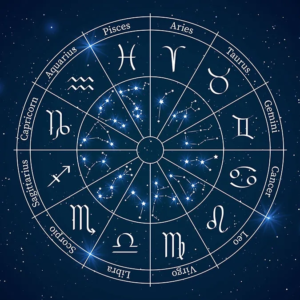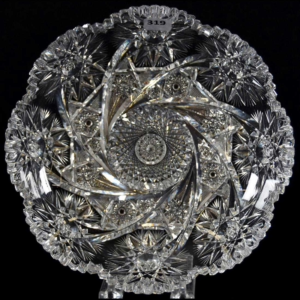Porphyry stone – properties, virtues & benefits
Porphyry stone is a magmatic rock of volcanic origin, characterized by its dark red or violet color and granular texture. Used since ancient times in the construction of buildings and monuments, it is still highly prized today for its beauty and durability. Discover the characteristics and uses of porphyry stone in this article.
PORPHYRE CHARACTERISTICS
- Chakra: /
- Properties: Magnetic waves, protection against negativity, curses.
- Astrology: /
- Zodiac: /
- Elements: /
- Colors: Dark red or purple.
- Hardness: Between 6 and 7 on the Mohs scale.
- Chemical Formula: The chemical composition of porphyry stone varies according to its geological origin, but it generally contains silicates, oxides and metals.
- Associated god: None.
PORPHYRE – HIS HISTORY
Porphyry comes in many shades, but it’s the purple that gives it its fame and historical prestige. Although Pharaonic Egypt did not use this stone, similar stones were used to make vases during the Predynastic period. However, the Ptolemies discovered the porphyry deposit in Egypt, near Jebel Dokhan, and began to mine it. Porphyry was highly prized in ancient Rome due to its rarity and the difficulty of extracting and transporting the stone. The red variety was particularly prized for its association with power.
Porphyry was known for its great hardness, which surpassed even that of limestone marble, requiring years of work and carving with the tools of the time. Porphyry was considered the most prestigious stone of the ancient Roman era, symbolizing imperial power and reserved for the decoration of monuments. Its exploitation was interrupted during the Middle Ages, leading to the loss of the associated knowledge. In the 18th century, porphyry stone from ancient Roman monuments was reused for architecture, while new deposits were discovered in Russia and Sweden.
.
The purple hue of porphyry was often associated with the blood of Christ, adding to its mythical and legendary dimension. Porphyry decorations were found in the Middle Ages, and Vasari propagated the legend that the secret of cutting had been found in Florence in the 16th century. In reality, the Pieces found up to the end of the 18th century were reworkings of antiquities. Exact dating is therefore difficult. In the 17th century, a large number of Pieces, including vases, were exported from Rome to all over Europe. However, the discovery of new sites led to the gradual commoditization of porphyry stone, limiting its use to precious objects considered “eternal”.
Currently, the main porphyry quarries are in Italy, in Trentino, producing 1.5 million tons per year, as well as in Australia, Argentina and Mexico. The Ouenast quarry in Belgium also produces 1.8 million tonnes a year, while the Pink porphyry of Algajola in Corsica is highly reputed. This extremely resistant stone has been used to build many famous structures, such as the Delta Plan in the Netherlands and the Channel Tunnel. It is also used for TGV railroads, asphalt roads and paving stone production.
.

PORPHYRE – ITS ORIGIN AND COMPOSITION
The term “porphyry” comes from the ancient Greek “porphýra”, meaning purple, in reference to its best-known variety at the time. In petrography, porphyry is a magmatic rock characterized by large feldspar crystals in an aphanitic paste, classified in the andesite group. Since Antiquity, certain varieties have been used for the ornamentation and sculpture of columns, wall plaques and basins. However, two varieties stand out from the rest because they were widely used in ancient Rome and are classified as antique marbles:
1- Red porphyry, also known as laPis porphyrites, is a paleovolcanic-looking andesite colored by Pink ePidote called Piemontite, a mineral species belonging to the silicate group. Quarries for this variety are located in the Egyptian Eastern Desert mountain range, west of Hurghada on Jebel Doukhan, also known as Mons Porphyrites or Mons Igneus. This variety was mainly exploited during the Roman era, as a noble and imperial material, mainly used for the construction of imposing buildings, majestic sarcophagi and other monumental decorations.
.
2- LaPis lacedaemonius or green porphyry, found in Lacedemona, ancient Sparta, is an andesite with an aphanitic paste and paleovolcanic appearance, consisting of large labradorite crystals transformed by Pistachio-colored ePidote. It also contains rare black pyroxenes. It is mined mainly in the Greek Peloponnese and has been used for sculpture since Minoan and Mycenaean times. It was highly prized in Rome under the Flavii, as well as in the Middle Ages and Renaissance. However, it was only available in small blocks.
Today, porphyry stone has lost the nobility that made it a precious material. It is mainly used for paving, as it is very solid, or for decoration if polished with care. However, porphyry has also become famous for the presence of gold. Two examples of regions where it is mined remain of interest:
1- THE QUENAST PORPHYSTONE MINE IN BELGIUM
At the end of the Ordovician, a volcanic arc formed from the Brabant massif to Flanders, at the beginning of the Silurian. These intrusions probably post-date the obstruction of the Tornquist Ocean and the clash between Avalonia and Baltica. Volcanism is explosive and probably the result of subduction of oceanic crust between two blocks of Avalonia. The two main emission centers are at Lessines and Quenast, south of Brussels, where a hornblende-bearing quartz diorite around 433 million years old forms a subcircular vertical intrusion 2 km in diameter.
.
This calc-alkaline volcanism is found in the Caledonian Condroz band, as well as at Llandovery, in the eastern region of Brabant. In addition, various Bouguer anomalies have been discovered through geophysics, but the link between these and intrusive andesites remains an unsolved enigma. Some scientists believe that a Precambrian crustal block of granitic nature could be at the origin of the gravity anomaly, as there would be a genetic incompatibility between a parent magma of granitic nature and the Quenast intrusive rocks. Finally, this structure has strongly deformed the western part of the Brabant massif.
.
2- LA ARENA NEAR HUAMACHUCO, PERU
The project is located in a gold-bearing area containing the Tres Cruces, Shahuindo, Alto Chicama and Comarsa mines. Geologically, the la Arena deposit is composed of sandstone, quartzite and thick sedimentation sequences dating from the Jurassic and Cretaceous eras, intersected by a silica-rich layer: a subvolcanic dacitic porphyry. Two types of mineralization have been identified on the property: a gold-bearing breccia zone and a copper-gold porphyry.
La Arena holds resources of up to 23.8 million tonnes, grading 0.7 g Au/t, representing 536,300 ounces of gold, worth $400 per ounce on the long-term market.

PORPHYRY STONE – VERTIES AND PROPERTIES
PSYCHOLOGICAL PORPHYRE
Porphyry stone is known for its protective properties against evil forces, malefic entities, spells and other curses. It can also serve as a shield against magnetic, electrical and telluric waves. This stone has an almost total neutralizing capacity, making it a panacea of choice for geobiology.
In addition to its protective properties, porphyry stone can help calibrate and positively enhance a room’s energy when placed in the ideal location and orientation. It is also considered a symbol of longevity, having been revered as such by the Egyptians.
In addition, porphyry stone is associated with prosperity, wealth, tranquility, and can promote successful projects and bring good luck. It is also believed to aid decision-making by providing a sense of strength and determination. Finally, this stone can offer insight into events and things, giving self-confidence and positive affirmation within a group.
PHYSICAL PORPHYRE
Porphyry stone has many beneficial properties for health and well-being. It is known to strengthen the base chakra by balancing red and white blood cells, as well as targeting the throat chakra to help overcome speech impediments. The stone also aids bone treatment and cell formation, as well as restoring damaged DNA. It is beneficial for the thymus gland during periods of growth and helps align the meridians. In addition, it can calm gastric problems, improve intestinal transit, reduce toxins and improve the circulatory system. It is also useful for calming coughs and soothing the resPiratory tract.
Porphyry stone provides a deep sense of grounding when placed in every pocket, and can Pick up telluric waves to circulate them throughout the body. It magnetizes and balances all bodies by multiplying the vibratory rate, reaching over 50,000 BOVIS units. It enables effective mental clarity that leads to deep meditation when arranged in a triangle, two on either side of the root chakra and one over the third eye.
.
Porphyry stone can also prevent and combat headaches, ease joint pain and relieve insect bites. Green and red stones have the same properties, although the former strengthen the sense of integrity more. Finally, green stone also provides a sense of moral order in addition to integrity.
In addition, the use of porphyry stone was not limited to Europe, as the Aztecs also used it to create works of art, including the famous Circle of the Sun. This circle was composed of eight concentric circles with religious significance: the first circle represented the sun, the next four circles symbolized the elements, the eighteen outer circles represented the months of the calendar year and the twenty inner circles represented the twenty days of the month. Ultimately, this mysterious magma has yet to reveal all its secrets.
WHERE DOES THE NAME PORPHYRE COME FROM?

The name “porphyry” comes from the Greek “porphyros”, meaning “purple violet”. This name refers to the characteristic color of this magmatic rock of volcanic origin, which can vary from dark red to purple. Porphyry has been used since ancient times for the construction of buildings and monuments, notably by the Egyptians, Romans and Greeks.
SUMMARY OF THE PORPHYRE STONE
Porphyry stone is a magmatic rock of volcanic origin, characterized by its dark red or violet color and granular texture. Used since antiquity in the construction of buildings and monuments, it is still highly prized today for its beauty and durability. The name “porphyry” comes from the Greek “porphyros”, meaning “purple violet”. The chemical composition of porphyry stone varies according to its geological origin, but it generally contains silicates, oxides and metals.

